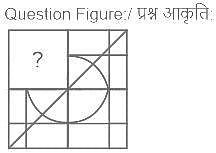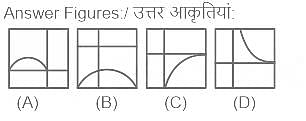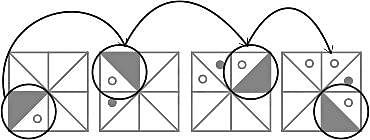CCI Management Trainee (Accounts) Mock Test - 4 - Agriculture Exams MCQ
30 Questions MCQ Test - CCI Management Trainee (Accounts) Mock Test - 4
In the following question, out of the four given options, select the one that best expresses the meaning of the idiom/phrase.
Break the bank.
Find the synonyms for the given word.
Emperor
| 1 Crore+ students have signed up on EduRev. Have you? Download the App |
According to the author, 'work' is:
Directions: Each item in this section consists of a sentence with an underlined word followed by four words. Select the option that is opposite in meaning to the underlined word and mark your response on the Answer Sheet accordingly.
She was known for her cogent arguments.
Directions: In the following items, there are two sentences S1 and S2, based on commonly used words which are underlined. Read the two sentences carefully and mark the response that denotes the correct use of these words in each of the two sentences and mark your response on the Answer Sheet accordingly.
S1: The principal of the school gave a speech.
S2: The main principal of the theory is simplicity.
Parts of a sentence are given below in jumbled order. Arrange the parts in the correct order to form a meaningful sentence.
A) honesty of the people
B) a nation is built
C) and their leaders
D) on the hard work and
Select the figure from among the given options that can replace the question mark (?) in the following series.

Read the given instructions carefully and answer the question:
Point B is 7 km to the west of point A.
Point C is 12 km to the south of point E.
Point A is 5 km to the east of point C.
Point D is 8 km to the north of point C.
Point G is 6 km to the west of point D.
Point H is 14 km to the south of point G.
If Shubham is standing 6 km to the east of point H and takes 1 hour to complete 6 km distance then in what possible time he would reach point E, if taken the shortest route?
Eight batsmen A, B, C, D, E, F, G, H batted in an inning for a team and scored different number of runs. G scored more than A, but less than D. A is not the least scorer. H is the highest scorer. B scored more than C, but less than F. D is the 5th highest scorer. C scored more than G.
Who is the least scorer?
DIRECTIONS: Select the answer figure in which the question figure is embedded.


In the question below there are two statements numbered I and II Decide whether the facts provided in those statements are sufficient to answer the question? Read both the statements and give your answer.
Question: Seven people Kuna, Kamal, Shiva, Naveen, Tarun, Rajesh and Vijay are standing in a row facing east. Who stands at the extreme right end?
I. Only Kamal is in between Vijay and Kuna. Naveen is to the immediate right of Vijay.
II. Naveen is between Vijay and Shiva. Tarun is standing to the immediate left of Kuna.
In a school,  of the number of students are girls and
of the number of students are girls and  of the total boys are below the age of six years.
of the total boys are below the age of six years.  of the total number of girls are also below six years of age. If the number of students aged six and above is 300, then find the total number of students in the school.
of the total number of girls are also below six years of age. If the number of students aged six and above is 300, then find the total number of students in the school.
A sum of Rs. 900 is divided into two parts such that the interest on the first part at 4% simple interest per annum and that on the other part at 2% simple interest per annum are equal. What is the interest accumulated on each part in a year?
What is the minimum requirement for annual accounts audit in an LLP?
What are examples of preventive costs of labour turnover?











 =
= 
 ×
×  =
= 
 ×
×  =
= 
 +
+ 
 =
=  =
= 
 =
= 
 = 300
= 300 = Rs. 25,60,000
= Rs. 25,60,000 = Rs. 12,00,000
= Rs. 12,00,000














